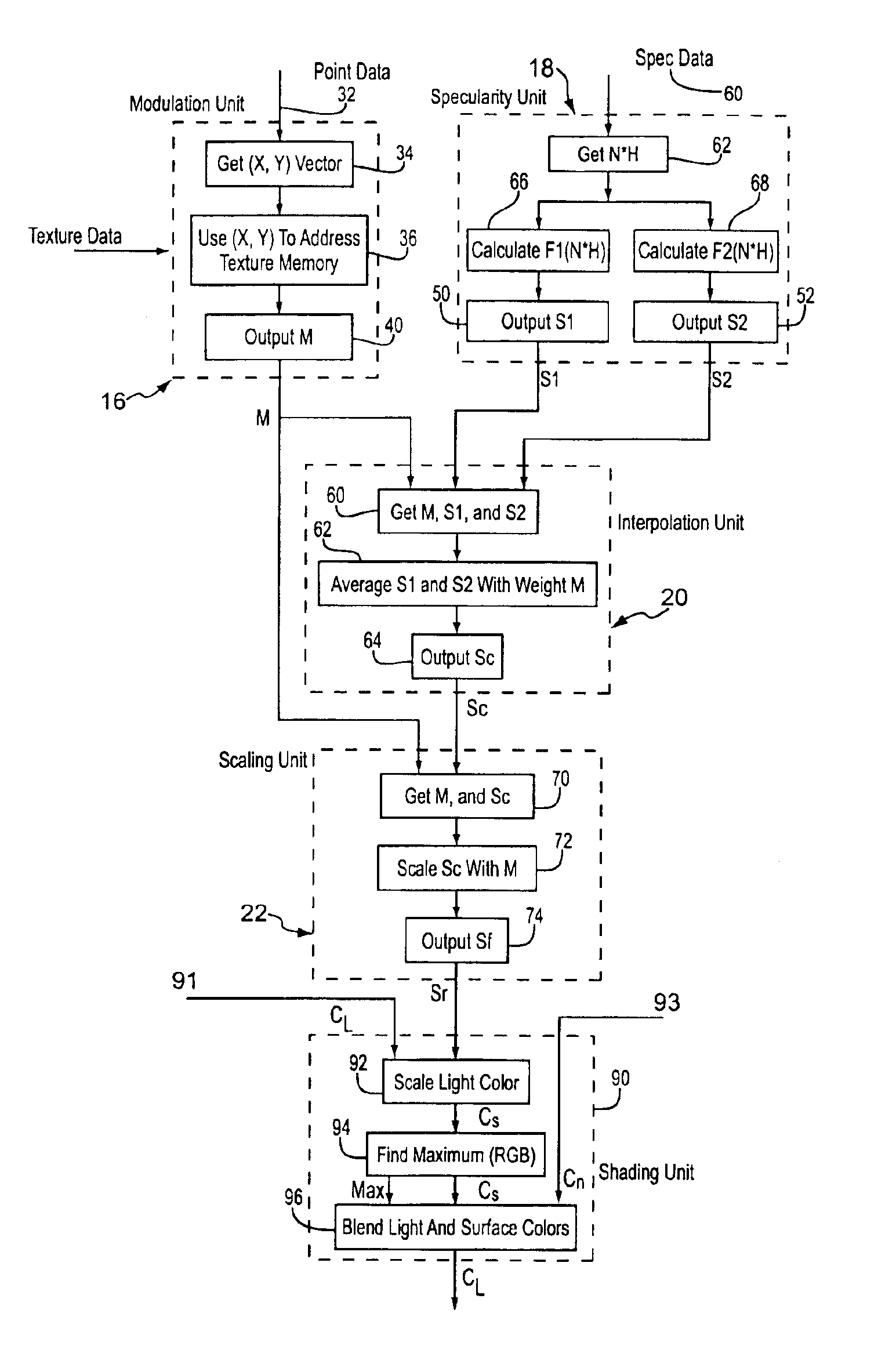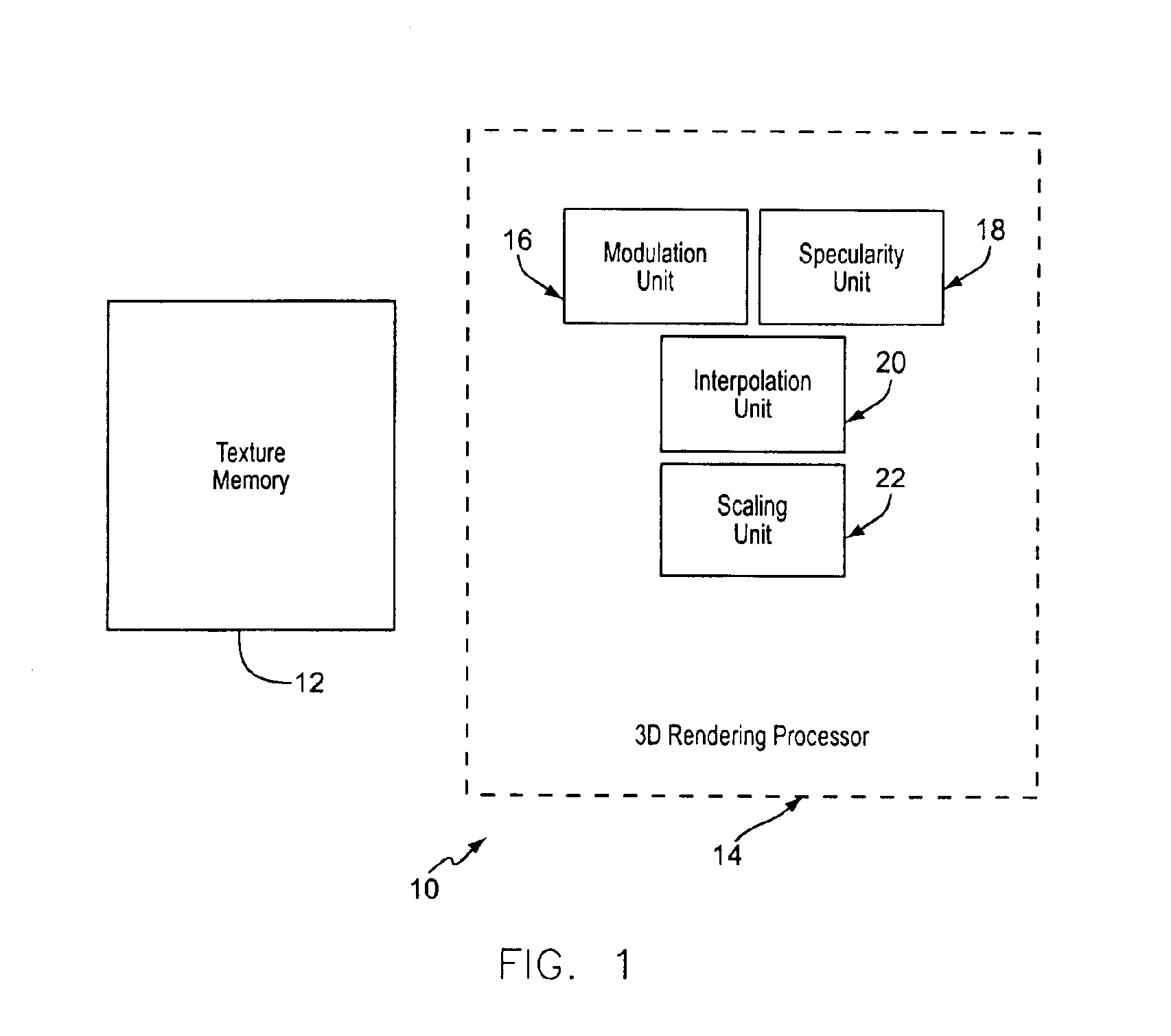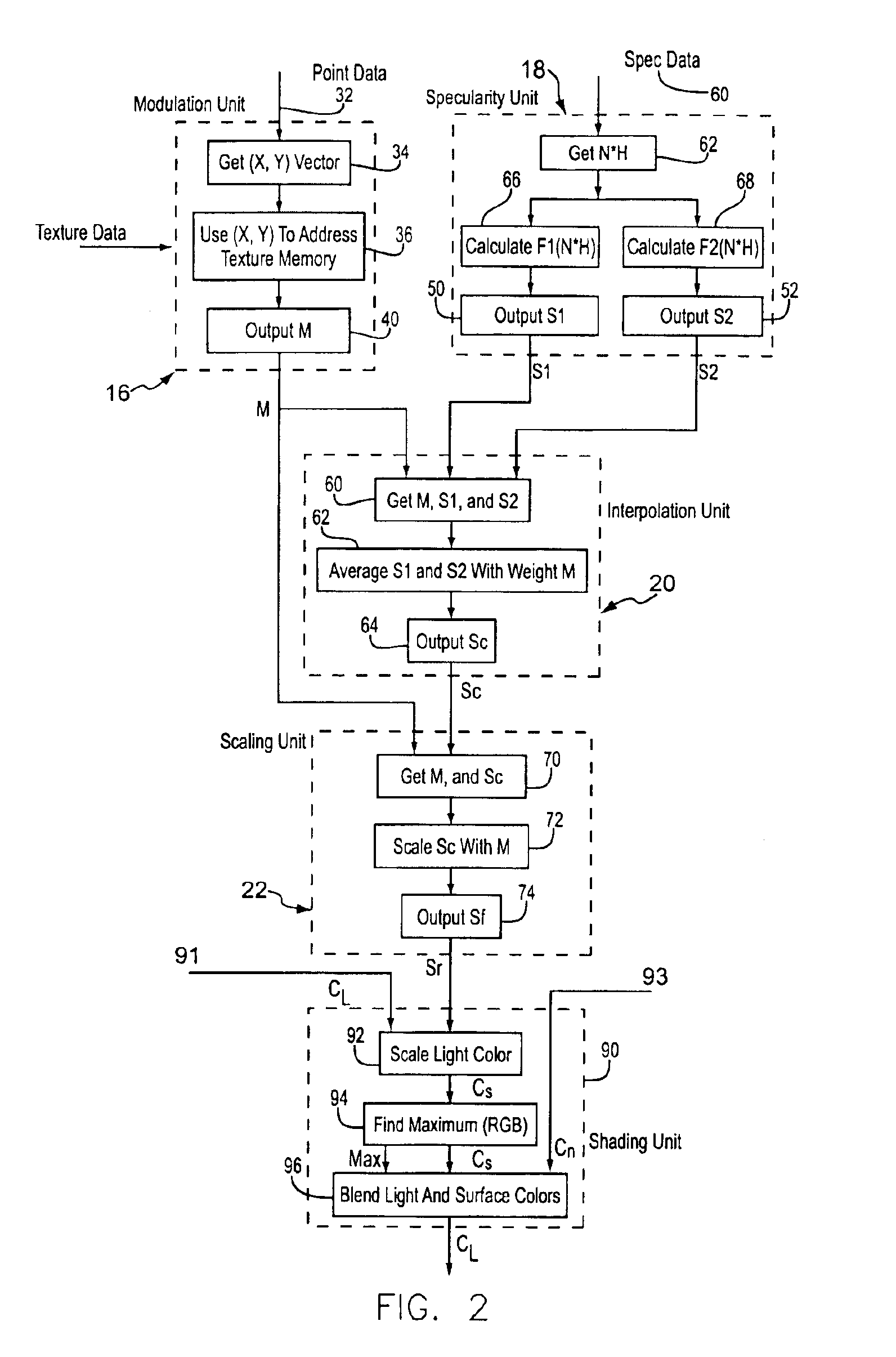Dirt map method and apparatus for graphic display system
a graphic display system and dirt map technology, applied in the field of computer generated image shadowing, can solve the problems of inaccurate highlights and representation of only uniform surface variations at polygon vertices, limited light and shading in commercially available 3-dimensional graphics accelerators, and limited shading
- Summary
- Abstract
- Description
- Claims
- Application Information
AI Technical Summary
Benefits of technology
Problems solved by technology
Method used
Image
Examples
Embodiment Construction
[0015]The methods and systems of the present invention as described below are assumed to operate within the framework of, and further assume the presence of, a computer polygon graphics system which rasterizes polygon surfaces to video RAM. The present invention operates on a per-pixel basis during the drawing of a polygon surface. The framework of a polygon rendering system is used primarily for purposes of illustration because of its widespread use in the industry. It will be apparent to those skilled in the art that the methods and practices of the present invention can be adapted to other per-pixel surface renderers including, but not limited to, NURBS / Belzier surface renderers and voxel surface renders.
[0016]FIG. 1. gives an overview of a preferred hardware embodiment of a realtime 3D graphics system 10 in accordance with a preferred embodiment of the invention. The system includes: a texture memory 12 that contains one or more dirt maps; a modulation unit 16 which obtains a sp...
PUM
 Login to View More
Login to View More Abstract
Description
Claims
Application Information
 Login to View More
Login to View More - R&D
- Intellectual Property
- Life Sciences
- Materials
- Tech Scout
- Unparalleled Data Quality
- Higher Quality Content
- 60% Fewer Hallucinations
Browse by: Latest US Patents, China's latest patents, Technical Efficacy Thesaurus, Application Domain, Technology Topic, Popular Technical Reports.
© 2025 PatSnap. All rights reserved.Legal|Privacy policy|Modern Slavery Act Transparency Statement|Sitemap|About US| Contact US: help@patsnap.com



